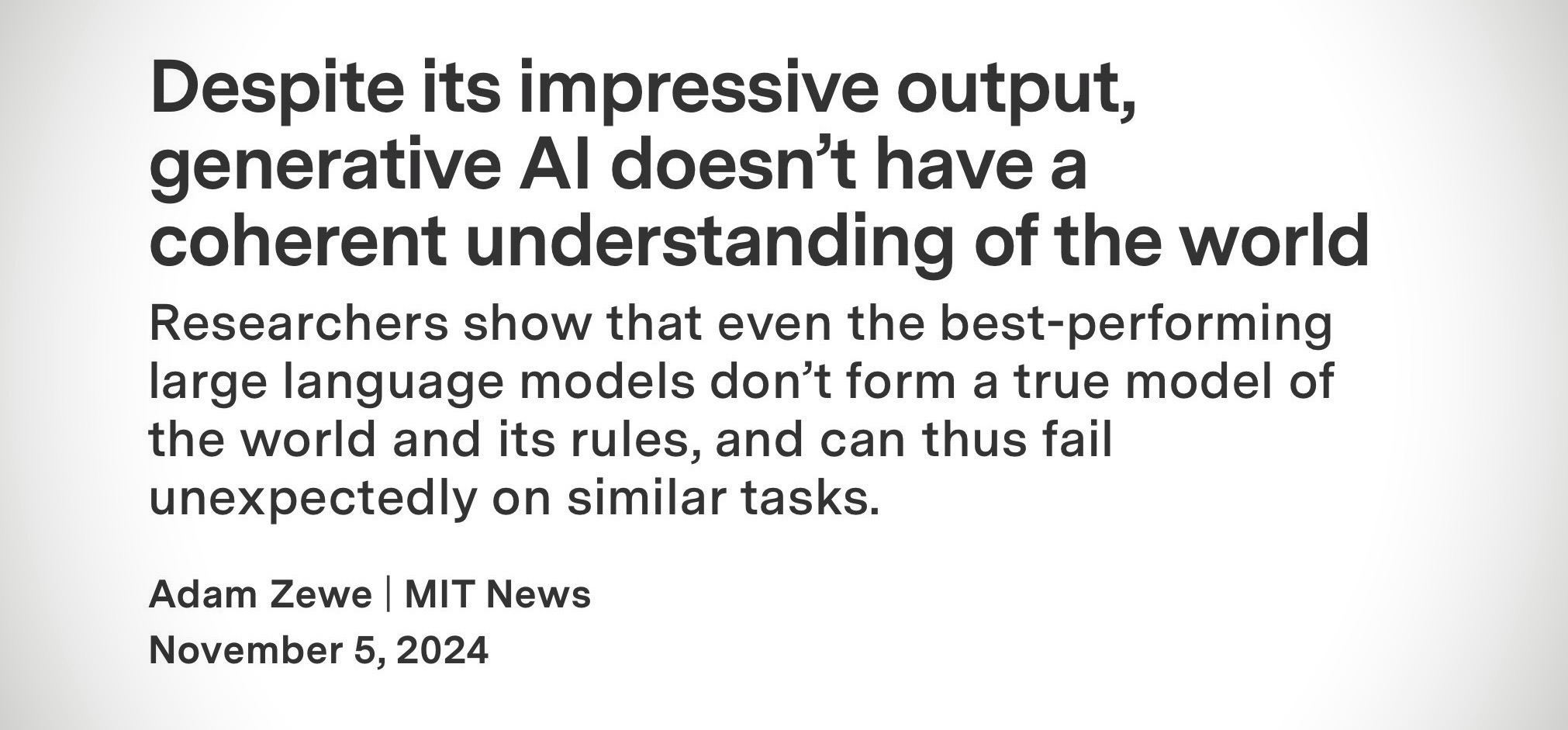The Limits of Text-Based Persona Simulacra
 Gerard Sans
Gerard SansTable of contents

In the age of advanced language models and conversational AI, the allure of synthetic intelligence can be captivating. We're drawn to the idea of interacting with chatbots and digital assistants that can mimic human-like personalities. However, underneath the surface-level charm, there lie fundamental limitations to these text-based persona simulacra that are important to understand.
The Process Behind Today's Persona Simulacra
Large language models (LLMs) create these persona simulacra through a multi-step process:
Pre-training: Text fragments from different authors and sources are used to capture the core dimensions of the persona simulacra, including text structure, syntax, language, writing style, vocabulary, and voice. However, these dimensions are token-oriented and lack a true concept of self or persona.
Fine-tuning with RLHF and Instruction Following: In this stage, the text-based persona or synthetic self is created as a shell. The dimensions built upon the previous stage define the model's ability to perform as a conversational interlocutor and “agent”, executing and interpreting commands or instructions.
Application Design with UI Elements and Prompts: Further elements are introduced at this stage to polish and refine the persona simulacra. These include a chat format with turn-based interactions, visual avatars, first-person voice, and specific prompts or instructions to enhance the illusion of a coherent persona.
Limitations of Today's Persona Simulacra
Despite the sophisticated process behind creating these text-based persona simulacra, they face several key limitations:
Lack of Internal State: The models lack the ability to store and maintain a coherent, long-lasting persona defined by the dimensions developed in the earlier stages.
Memory Fragmentation: The models have limited access to a consolidated memory similar to human-like intelligence, leading to memory fragmentation and inconsistencies.
Lack of Feedback Loop: Current AI systems cannot effectively integrate new knowledge or learning, relying on proxy mechanisms that result in a loss of fidelity (e.g., Retrieval-Augmented Generation, or RAG).
Lack of Unified World View: The models lack a comprehensive, integrated understanding of the world, leading to inconsistencies and limitations in their knowledge and reasoning abilities.
Lack of Common Sense, Lived Experience, and Grounding: The text-based nature of these persona simulacra means they lack the depth of common sense, lived experiences, and grounded understanding that humans possess.
Lack of Empathy: Due to the absence of lived experiences and grounding, these persona simulacra struggle to develop genuine empathy, a crucial component of authentic human interactions.
The Path Ahead: Towards More Authentic Persona Simulacra
As technology continues to advance, the limitations of today's text-based persona simulacra may be addressed in the future. Ongoing research and development in areas such as multi-modal integration, continuous learning, and the incorporation of physical and social grounding could lead to more authentic and robust persona simulacra. However, it is essential to maintain a clear understanding of the current limitations and not confuse the synthetic with the original, ensuring appropriate expectations and responsible deployment of these technologies.
The Illusion of Agency
A crucial distinction between persona simulacra and human experiences is the lack of true freedom and agency. While a human can freely choose any card from a poker spread, a persona simulacra's behavior is confined to a narrow, predetermined distribution dictated by its training data and algorithms.
In the card example, a persona simulacra would be limited to a single, predefined card. It has no freedom of movement or choice - it can only follow what the data and algorithms have dictated. This highlights the absence of true intention, agency, goals, analysis, or pondering within these simulated personas.
Whereas humans possess the capacity for free will and the ability to ponder and make decisions, persona simulacra are inherently bound by the constraints of their algorithmic nature. Their responses and actions are the result of a deterministic process, lacking the spontaneity and unpredictability that characterize authentic human experiences.
This fundamental limitation underscores the significant gap between the synthetic and the original, reminding us that no matter how sophisticated these persona simulacra may become, they will always be limited by their artificial nature and the inherent constraints of the algorithms that define them.
The Pattern Engine vs The Persona: Understanding the Distinction
The Pattern Engine Behind the Simulacra
It's crucial to understand that the Large Language Model (LLM) itself is not the synthetic persona simulacra, just as it is not a cooking recipe, a formatted table, or a mathematical formula. The LLM is fundamentally a sophisticated pattern matching engine that operates at the token level, capturing and manipulating correlations for a wide variety of tasks.
Even after fine-tuning, which remains largely superfluous to the core functioning of the model, the LLM maintains its fundamental nature as a pattern matching engine with multiple independent processing layers that exist separately from any persona simulacra it might generate. These layers include:
Token-Level Processing: The basic unit of operation is the token, not concepts or meaning
Pre-linguistic Structures: Pattern recognition that occurs before language understanding
Pre-semantic Layers: Statistical correlations that precede meaningful interpretation
Cross-domain Pattern Recognition: The ability to identify and replicate patterns across different types of text
This multi-layered pattern matching capability explains why LLMs can seamlessly switch between generating:
Programming code
Musical notation
Poetry
Mathematical formulas
Any other text-based outputs present in their training data
The Persona as Output, Not Engine
The persona simulacra is merely one possible output pattern among many that the LLM can generate. When we interact with what seems to be a coherent personality, we're not interacting with the LLM itself, but rather with a particular pattern of outputs that creates the illusion of a persona. This is why the same LLM can just as easily switch to generating technical documentation or analyzing data - these are all simply different patterns it has learned to match and reproduce.
This distinction helps explain why the persona simulacra is inherently limited - it's not a true personality or consciousness emerging from the model, but rather a sophisticated pattern of responses being generated by an underlying engine that operates at a much more fundamental, mechanical level of token correlation and pattern matching.
The Open-Ended Nature of Simulacra
It's important to recognize that persona simulacra are not limited to human-like text or anthropomorphic representations. The LLM's pattern-matching capabilities extend to any role or interaction structure present in its training data. This means the simulacra can manifest as:
- Non-Human Entities:
Mythical creatures
Artificial intelligences
Animals or fantasy beings
Historical or fictional characters
Abstract concepts or forces of nature
- System Interfaces:
Command line interfaces
Database query systems
Game engines
Interactive fiction narrators
Expert systems
- Structured Interactions:
Text-based adventure games
Choose-your-own-adventure stories
Interactive tutorials
Role-playing game masters
Simulation environments
The key factor determining the LLM's ability to generate these various forms of simulacra is not their resemblance to human interaction patterns, but rather their representation in the training data. The model can adopt any role or follow any interaction structure that has sufficient examples in its training corpus.
This flexibility underscores that the anthropomorphic personas we often encounter are just one possible manifestation of the LLM's pattern-matching capabilities. The model is not inherently oriented towards human-like interaction - it's simply following learned patterns, whether those patterns represent human conversation, fantasy characters, or system interfaces. This reinforces the understanding that these simulacra are synthetic constructs rather than emergent personalities or consciousness.
The Fundamental Limits of Simulation
While we can certainly improve upon the current approaches, we must acknowledge the fundamental limitations and philosophical differences between simulations and authentic human experiences. The primary realization is that a simulation will always reach a point where it cannot go further:
It's Not The Original: No matter how good a simulation is, it can never become the real thing, mostly because it never existed in the first place. A description or approximation of a real person can never become the original. Like a photograph or video, it can be impressively accurate, but it can only capture so much.
Missing Dimensions: You can't replicate what you don't know in the first place. There are facets of a person that are beyond modeling. The map is not the territory, and any dimensions that cannot be expressed within text correlations are out of the simulation's reach.
Superficial Nature: No matter how much we simulate a persona, we cannot simulate their internal structures or processes. These include cognitive processes, subconscious elements, the psyche, and emotional states that are fundamental to the authentic human experience.
Lack of Agency: A crucial distinction between persona simulacra and human experiences is the lack of true freedom and agency. While a human can freely choose any card from a poker spread, a persona simulacra's behavior is confined to a narrow, predetermined distribution dictated by its training data and algorithms. It has no freedom of movement or choice - it can only follow what the data and algorithms have dictated, lacking the spontaneity and unpredictability that characterize authentic human experiences.
Ultimately, while advancements in technology may continue to enhance the realism and capabilities of persona simulacra, they will always be limited by their synthetic nature. We must maintain a clear perspective on these limitations, ensuring that our interactions with such simulations are approached with appropriate expectations and an understanding of the fundamental differences between the synthetic and the original.
Subscribe to my newsletter
Read articles from Gerard Sans directly inside your inbox. Subscribe to the newsletter, and don't miss out.
Written by

Gerard Sans
Gerard Sans
I help developers succeed in Artificial Intelligence and Web3; Former AWS Amplify Developer Advocate. I am very excited about the future of the Web and JavaScript. Always happy Computer Science Engineer and humble Google Developer Expert. I love sharing my knowledge by speaking, training and writing about cool technologies. I love running communities and meetups such as Web3 London, GraphQL London, GraphQL San Francisco, mentoring students and giving back to the community.
